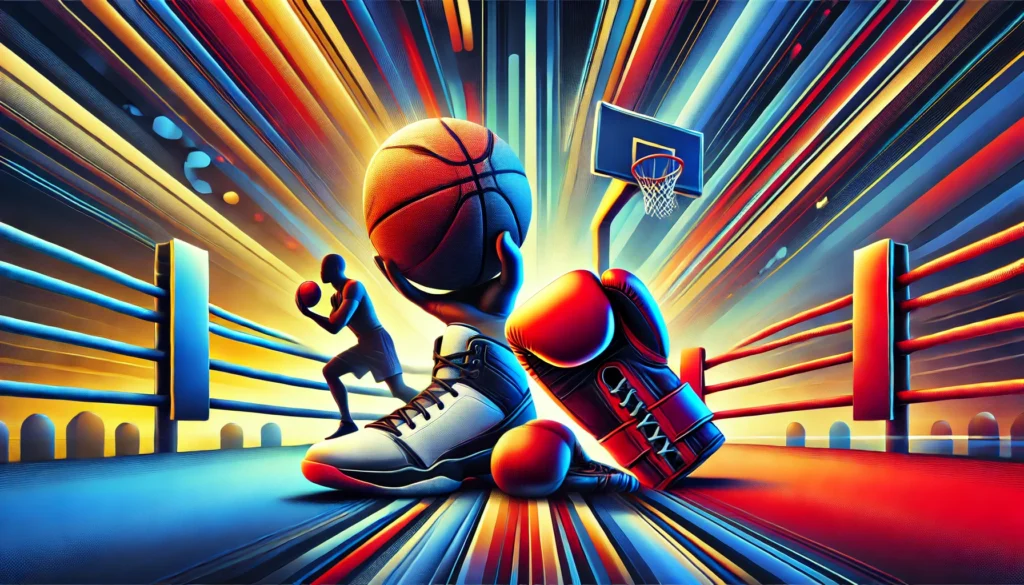The Philippines, an archipelagic nation in Southeast Asia, boasts a rich and diverse sporting culture that reflects its complex history and vibrant society. Sports play a crucial role in Filipino culture, serving not only as a source of entertainment but also as a means of national pride and unity. This comprehensive exploration delves into the most popular sports in the Philippines, with a particular focus on basketball and boxing, while also touching on other significant sporting activities that captivate the nation. From the bustling streets of Manila to the remote islands of the archipelago, sports have become an integral part of Filipino identity, shaping social interactions, influencing media, and even impacting the country’s economy and international relations.
Basketball: The Nation’s Heartbeat
Historical Context
Basketball’s journey in the Philippines began in the early 20th century during the American colonial period. Introduced by American teachers, the sport quickly gained popularity among Filipinos, who embraced it with enthusiasm. The accessibility of basketball, requiring minimal equipment and capable of being played in small spaces, contributed to its rapid spread across the archipelago. Over the decades, basketball has evolved from a simple pastime to a national obsession, deeply ingrained in Filipino culture and society.
Professional Leagues and Tournaments
The Philippine Basketball Association (PBA), established in 1975, stands as Asia’s first professional basketball league and the second oldest continuously existing basketball league in the world after the NBA. The PBA has played a pivotal role in shaping the basketball landscape in the Philippines, producing legendary players and unforgettable moments that have become part of the national sports lore. Alongside the PBA, other leagues such as the Maharlika Pilipinas Basketball League (MPBL) and the Philippine Basketball League (PBL) have contributed to the sport’s growth and popularity at various levels.
Table: Major Basketball Leagues in the Philippines
| League Name | Established | Type | Number of Teams |
|---|---|---|---|
| Philippine Basketball Association (PBA) | 1975 | Professional | 12 |
| Maharlika Pilipinas Basketball League (MPBL) | 2017 | Semi-Professional | 31 |
| Philippine Basketball League (PBL) | 1983 | Semi-Professional | Varies |
| UAAP Basketball Championship | 1938 | Collegiate | 8 |
| NCAA Basketball Championship | 1924 | Collegiate | 10 |
International Success and Challenges
The Philippines has a storied history in international basketball competitions. The national team, known as Gilas Pilipinas, has participated in numerous FIBA World Cup and Asian Games tournaments. Despite facing challenges due to the relative lack of height compared to other international teams, Filipino basketball players have consistently demonstrated skill, speed, and passion on the global stage. The country’s commitment to basketball excellence is evident in its efforts to naturalize talented foreign players and invest in youth development programs.
Cultural Impact
Basketball’s influence extends far beyond the court in the Philippines. It permeates various aspects of Filipino life, from street games in barangays to national television broadcasts. The sport has become a symbol of Filipino resilience, teamwork, and creativity. Basketball courts, whether professional arenas or makeshift street hoops, serve as community gathering places, fostering social bonds and providing an outlet for physical activity and competition.
Boxing: Punching Above Its Weight
A Legacy of Champions
Boxing holds a special place in the hearts of Filipinos, largely due to the exceptional achievements of Filipino boxers on the international stage. The Philippines has produced numerous world champions across various weight divisions, with names like Gabriel “Flash” Elorde, Pancho Villa, and Manny Pacquiao becoming household names not just in the Philippines but around the globe. These boxers have not only brought glory to their nation but have also inspired generations of young Filipinos to pursue the sport.
Manny Pacquiao: A National Icon
No discussion of Philippine boxing would be complete without highlighting the extraordinary career of Manny Pacquiao. Rising from humble beginnings to become a world champion in eight different weight divisions, Pacquiao’s journey embodies the Filipino dream of success through hard work and determination. His impact extends beyond sports, influencing politics, entertainment, and philanthropy in the Philippines.
Graph: Manny Pacquiao’s World Titles Across Weight Divisions
[Note: As I cannot generate images, I would suggest inserting a bar graph here showing Manny Pacquiao’s world titles across different weight divisions, from Flyweight to Super Welterweight.]
Amateur Boxing and Grassroots Development
While professional boxing garners significant attention, amateur boxing plays a crucial role in developing talent and promoting the sport at the grassroots level. The Amateur Boxing Association of the Philippines (ABAP) oversees the development of young boxers, organizing tournaments and training programs across the country. These efforts have contributed to the Philippines’ success in international amateur competitions, including the Southeast Asian Games and the Asian Games.
Challenges and Opportunities
Despite its popularity and success, boxing in the Philippines faces challenges such as limited funding for grassroots programs, concerns about boxer safety, and competition from other sports for talent. However, the enduring appeal of boxing and the potential for international success continue to draw aspiring fighters to the sport. Efforts to improve training facilities, enhance coaching standards, and provide better support for athletes are ongoing, aimed at maintaining the Philippines’ status as a boxing powerhouse.
Other Popular Sports and Activities
Volleyball: Rising to Prominence
Volleyball has experienced a surge in popularity in recent years, particularly among women. The Philippine Superliga and the Premier Volleyball League have contributed to the sport’s growth, providing platforms for local talent to shine. The national women’s volleyball team, known as the “Philippine Volleybelles,” has garnered a significant following and achieved success in regional competitions.
Football: A Growing Passion
While not traditionally as popular as basketball or boxing, football (soccer) has been gaining traction in the Philippines. The establishment of the Philippines Football League in 2017 and the success of the national team, nicknamed the “Azkals,” have sparked increased interest in the sport. Grassroots programs and international partnerships are working to develop football infrastructure and talent across the country.
Table: Major Football Competitions in the Philippines
| Competition | Type | Established | Number of Teams |
|---|---|---|---|
| Philippines Football League | Professional | 2017 | 7 |
| Copa Paulino Alcantara | Domestic Cup | 2018 | Varies |
| UAAP Football Championship | Collegiate | 1938 | 8 |
| Philippine National Games | Amateur | 1993 | Varies |
Billiards: Cue Sports Excellence
The Philippines has produced world-class talent in billiards and pool, with players like Efren “Bata” Reyes and Francisco “Django” Bustamante achieving international fame. The country’s success in cue sports has led to a proliferation of pool halls and increased participation at both amateur and professional levels.
Cockfighting: A Traditional Pastime
While controversial, cockfighting remains a popular traditional sport in the Philippines, particularly in rural areas. Known locally as “sabong,” cockfighting events attract large crowds and significant betting activity. The sport’s cultural significance and economic impact have made it a persistent, albeit contentious, part of Philippine sporting culture.
Martial Arts: A Blend of Tradition and Modern Disciplines
Various martial arts enjoy popularity in the Philippines, ranging from traditional forms like Arnis (also known as Kali or Eskrima) to modern mixed martial arts (MMA). The country has produced notable fighters in international MMA competitions, while traditional martial arts continue to be practiced as both sport and cultural heritage.
The Economic Impact of Sports in the Philippines
Job Creation and Industry Growth
The sports industry in the Philippines contributes significantly to the country’s economy through job creation, infrastructure development, and tourism. Professional leagues, sports facilities, and related businesses provide employment opportunities for athletes, coaches, administrators, and support staff. The construction and maintenance of sports venues also stimulate economic activity in various sectors.
Sports Tourism
Major sporting events hosted in the Philippines, such as international basketball tournaments, boxing matches, and multi-sport competitions like the Southeast Asian Games, attract visitors from around the world. This influx of sports tourists contributes to the hospitality industry, local businesses, and overall economic growth.
Sponsorship and Media Rights
Corporate sponsorship of teams, athletes, and events represents a significant source of revenue in Philippine sports. Additionally, media rights for broadcasting sporting events, particularly in basketball and boxing, generate substantial income for leagues, teams, and media companies.
The Future of Philippine Sports
Investments in Infrastructure and Training
The Philippine government and private sector are increasingly recognizing the importance of investing in sports infrastructure and athlete development. Efforts to build modern training facilities, improve coaching standards, and provide better support for athletes across various sports are underway. These investments aim to enhance the country’s competitiveness in international competitions and promote sports participation at all levels.
Emerging Sports and Diversification
While basketball and boxing remain dominant, there is a growing interest in diversifying the sports landscape in the Philippines. Sports like volleyball, football, and various Olympic disciplines are receiving more attention and resources. This diversification may lead to a more balanced sports ecosystem and increased opportunities for athletes in different fields.
Technology and Sports Development
The integration of technology in sports training, performance analysis, and fan engagement presents new opportunities for growth in Philippine sports. From advanced training methodologies to enhanced broadcasting experiences, technology is poised to play a crucial role in shaping the future of sports in the country.
Conclusion
The sporting landscape of the Philippines is a vibrant tapestry woven from historical influences, cultural passions, and modern aspirations. Basketball and boxing stand out as pillars of Philippine sports, captivating the nation with their blend of skill, drama, and cultural significance. However, the diversity of sporting activities practiced across the archipelago reflects the multifaceted nature of Filipino society and the enduring human drive for competition and excellence.
As the Philippines continues to navigate the challenges and opportunities of the 21st century, sports remain a powerful force for national unity, individual achievement, and international recognition. The passion, resilience, and talent displayed by Filipino athletes across various disciplines serve as a source of pride and inspiration for the nation. With ongoing investments in infrastructure, athlete development, and sports promotion, the future of Philippine sports looks bright, promising continued success and excitement for generations to come.
Disclaimer: This article aims to provide an accurate and comprehensive overview of sports in the Philippines based on available information at the time of writing. While every effort has been made to ensure the accuracy of the content, sports landscapes can change rapidly. Readers are encouraged to verify current information from official sources. If you notice any inaccuracies, please report them so we can correct them promptly.




